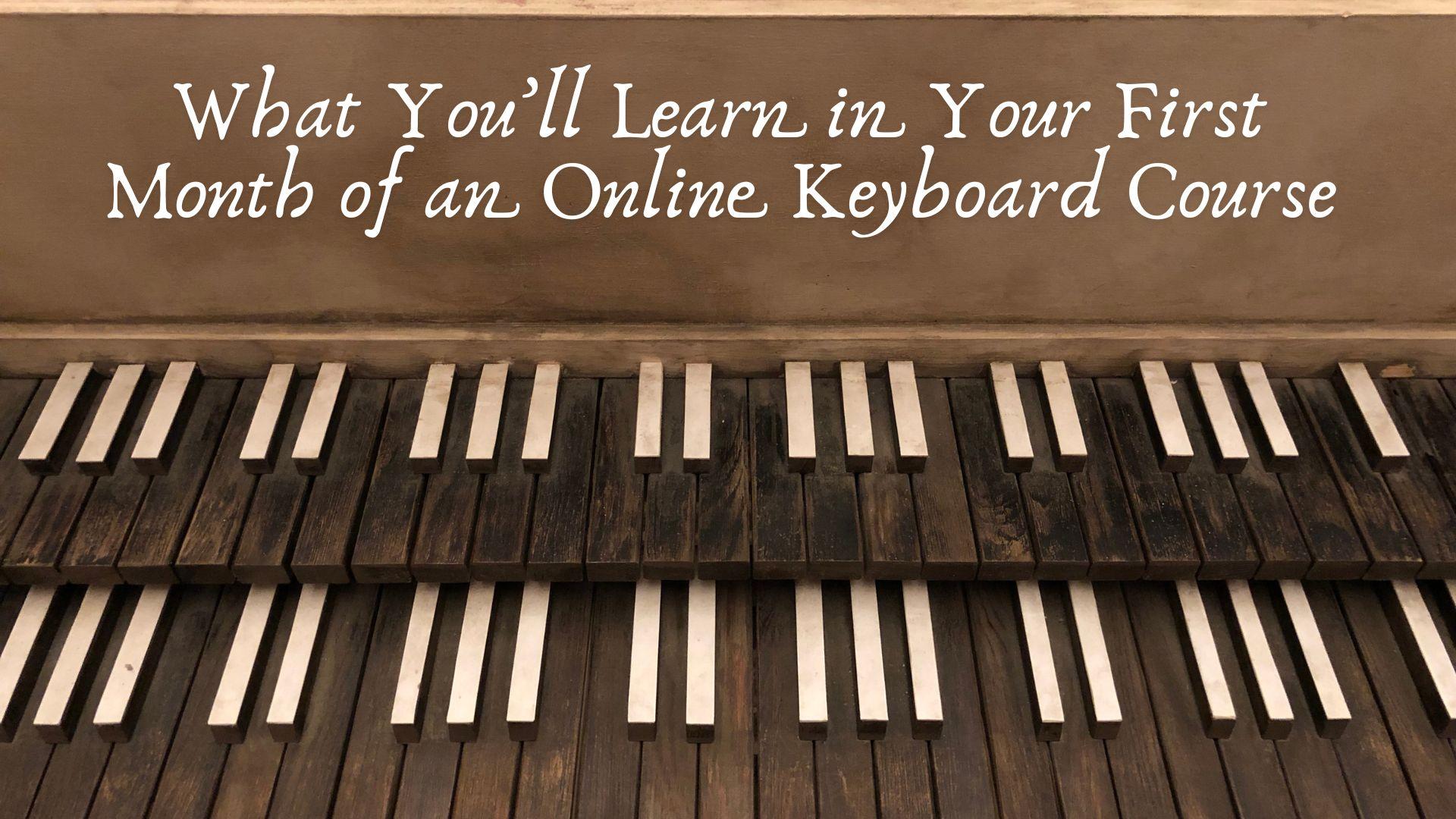Learning to play the keyboard is a rewarding journey that combines creativity, discipline, and joy. With the rise of online education, aspiring musicians now have access to high-quality keyboard courses right from the comfort of their homes. If you’re considering starting an online keyboard course, you might be wondering what your first month will look like. Here's a comprehensive overview of what you can expect to learn during the initial phase of your musical adventure.
Week 1: Introduction to the Keyboard and Basic Music Theory
The first week is all about getting familiar with the instrument and building a strong foundation.
Key Topics:
- Keyboard Layout: You’ll learn about the arrangement of black and white keys, the repeating pattern of notes, and how to locate middle C.
- Understanding Notes: Basic music theory begins with learning the musical alphabet (A to G), octaves, and identifying notes on the keyboard.
- Posture and Hand Position: Correct posture and hand placement are vital to avoid injury and promote effective learning.
- Basic Rhythm and Timing: Simple rhythm exercises will introduce you to the concept of beats, note values (quarter, half, whole), and rests.
Practice Tip: Spend 15–30 minutes each day reviewing the note names and practicing hand posture exercises.
Week 2: Learning Scales and Simple Melodies
Once you're comfortable with the layout and theory, the second week moves into playing.
Key Topics:
- C Major Scale: Most courses begin with the C major scale because it uses only the white keys. You’ll learn finger numbers and correct fingering.
- Basic Melodies: You'll start playing simple songs like “Twinkle Twinkle Little Star” or “Mary Had a Little Lamb.”
- Reading Sheet Music: Introductory sight-reading will begin, focusing on the treble clef and identifying simple notes.
Practice Tip: Break down melodies into short sections and practice slowly, gradually increasing your speed as you gain confidence.
Week 3: Playing with Both Hands and Simple Chords
This week challenges you to begin coordinating both hands and playing basic harmonies.
Key Topics:
- Hands Together: Practice scales and melodies using both hands simultaneously, usually starting with the same notes.
- Introduction to Chords: Learn about triads, starting with C major, G major, and F major chords.
- Left-Hand Accompaniment: Basic accompaniment patterns are introduced, such as playing root notes or simple broken chords.
Practice Tip: Focus on slow and steady practice to improve coordination between both hands. Use a metronome if needed.
Week 4: Rhythm, Dynamics, and Expressive Playing
By now, you're ready to add expression and rhythm to your playing.
Key Topics:
- Advanced Rhythm Patterns: You’ll experiment with syncopation and dotted notes to enhance timing and musicality.
- Dynamics: Learn how to control volume (soft vs. loud) using touch sensitivity and pedal techniques (if your keyboard has a sustain pedal).
- Playing Simple Songs with Emotion: You’ll revisit earlier songs and apply dynamics and phrasing to bring them to life.
Practice Tip: Record yourself to assess your timing, dynamics, and overall performance. Listening back can help identify areas for improvement.
Bonus Skills You May Learn:
- Using Online Tools: Many courses teach how to use learning apps, virtual keyboards, or MIDI software to track progress and enhance learning.
- Basic Improvisation: Some courses may introduce creative play, encouraging you to make up simple melodies using known scales.
Final Thoughts: Building Confidence and Motivation
The first month of an online keyboard course lays the groundwork for everything that follows. You’ll gain a solid understanding of the instrument, learn how to read and play simple music, and build confidence in your abilities. The key to success is consistency—daily practice, even in short sessions, will help reinforce skills and improve your musical ear.
Most importantly, remember to enjoy the process. Learning the keyboard isn’t just about notes and theory—it’s about expressing yourself, discovering your musical voice, and having fun along the way.

